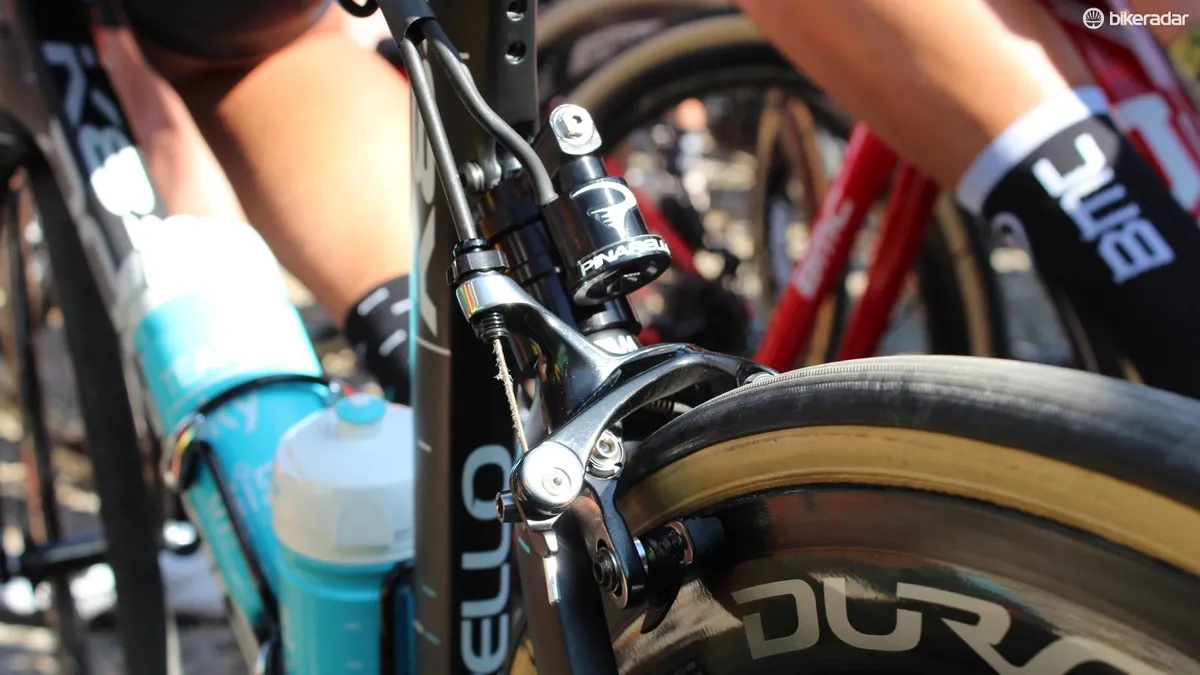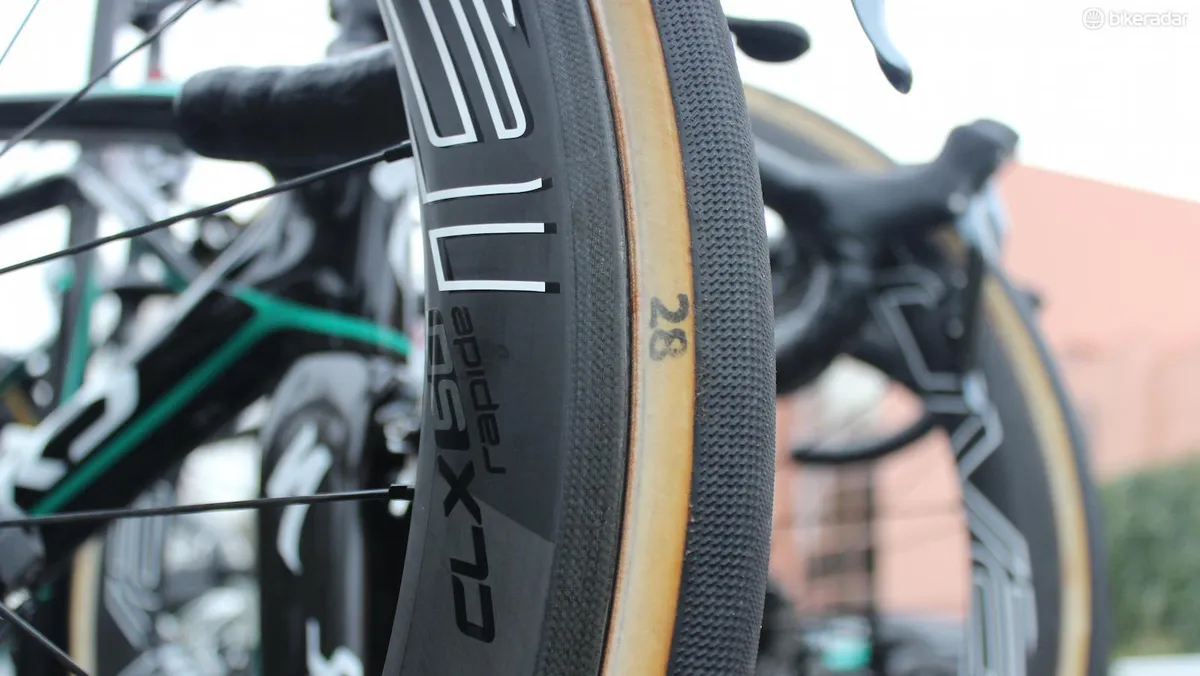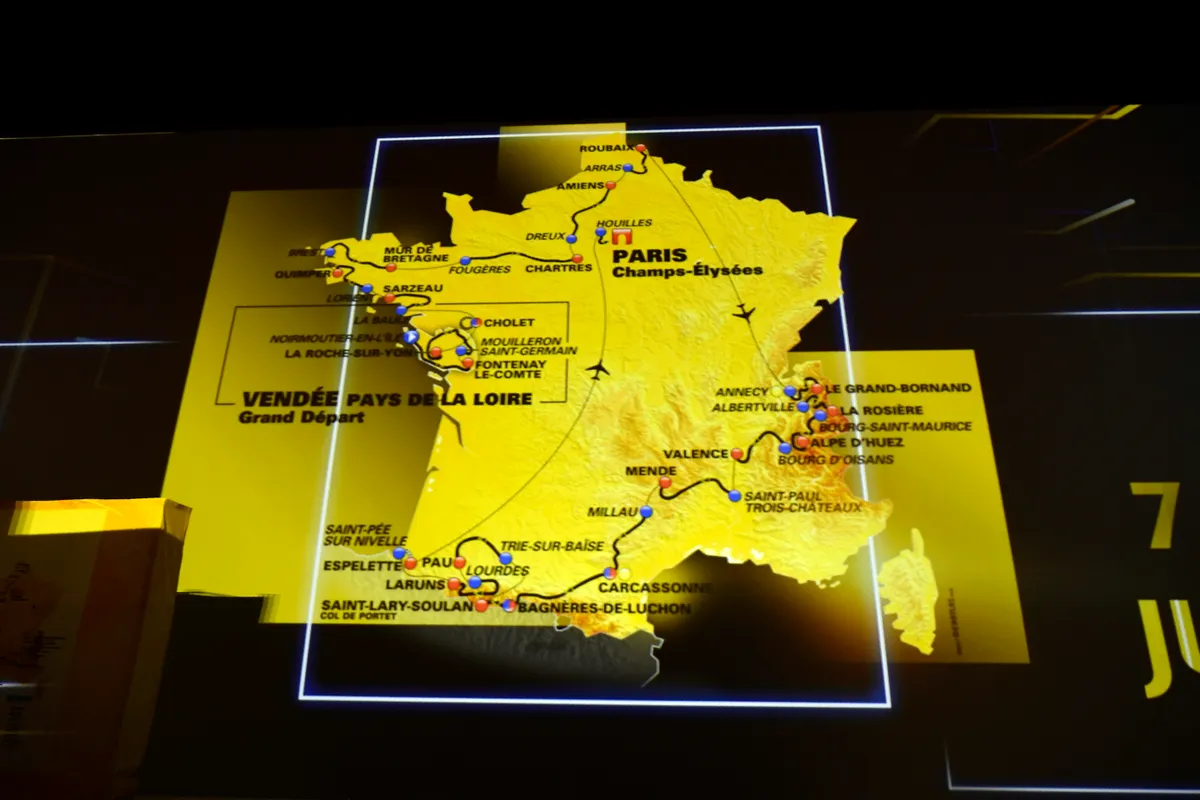Update: The 2020 Tour de France route has now been unveiled
Earlier this week the 2018 Tour de France route was unveiled to riders, teams, dignitaries and the international press. The course features the usual 21 stages and will finish on the Champs-Elysees in Paris.
- Tour de France mega tech gallery
- Top 5 custom bikes at the Tour de France
- Gallery: Tour de France jersey winners' bikes
The route is a mixed bag of parcours, favouring the sprinters and puncheurs in the first week before heading to the mountains in the second and third weeks.
- Full route and analysis can be seen here at Cyclingnews.com
A key team time-trial on stage three as well as an individual time trial on the penultimate stage are likely to be pivotal moments in the overall standings.
This season Tom Dumoulin’s Team Sunweb and Chris Froome’s Team Sky have excelled in time trials, so both parties are likely to be relishing the two timed stages, which will total 66km.
Hell of the North?

As well as the races against the clock, stage 9 could prove just as crucial.
A 154km flat stage from Arras Citadelle to the Roubaix velodrome features 15 cobbled secteurs totalling nearly 22km. The cobbled secteurs are around a third of what is featured during the famous Paris-Roubaix Monument in the spring, but will still be enough of a challenge for the lightweight climbing specialists and GC contenders next July.
The last time pavé featured in the Tour de France was 2014. Lars Boom took the victory that day in wet conditions, while Chris Froome crashed twice before the cobbles even started.
The crashes resulted in the Team Sky rider abandoning the race, and the 15 secteurs in 2018 could again prove a challenge for the Briton. Classics specialists on the other hand will be relishing the cobbles and we can expect big performances from the likes of Peter Sagan, Philippe Gilbert and Greg Van Avermaet.
Despite only 22km of pavé, the cruel cobbles of Roubaix will result in plenty of neat tech that’s usually only showcased in the spring; wider tyres, extra bar tape, disc brakes and possibly even some new suspension systems first spotted at this year’s edition of the one-day Classic are expected to be on show.
Into the mountains and on to the gravel…

Following the cobbles, and after nine stages of racing, the riders will be awarded a rest day in Annecy before heading into the mountains.
Stage 10 is set to be 159km long and feature a total of four categorised climbs, but the headlines could be made on the off-road gravel section midway through the stage.
While gravel sections have been common in recent years at the Giro d’Italia, specifically on the Colle della Finestre, roads of the unpaved variety have been scarce in the modern era at the biggest race in the world.
The Strade Bianche has over 60km of gravel sections throughout its course while the Tour’s section on stage 11 will only feature 2km. This section of the race is unlikely to cause any real concerns or technical challenges for the main protagonists though, and while we do see some riders opt for wider rubber during the Italian one-day race, it’s unlikely that we will see Chris Froome et al going any wider than the preferred 25mm rubber.
Fireworks
After the Alps the race will head west towards the Pyrenees, and stage 17 is likely to see fireworks from the off being just 65km in length. Despite the tame distance, the stage has three categorised climbs and a massive 3,800 metres of climbing. The race could easily be lost or won here.
Ahead of the penultimate stage’s individual time trial, stage 19 adds even more fuel to the fire with close to 5,000 metres of climbing and four categorised climbs including the Col du Tourmalet and Col d’Aubisque.
BikeRadar will be bringing you all of the tech from the Tour de France next July, but in the meantime why not reminisce over the 2017 season by visiting our Tour de France page.
Let us know which stages you are looking forward to the most and your favourites for the main jerseys in the comments below.
